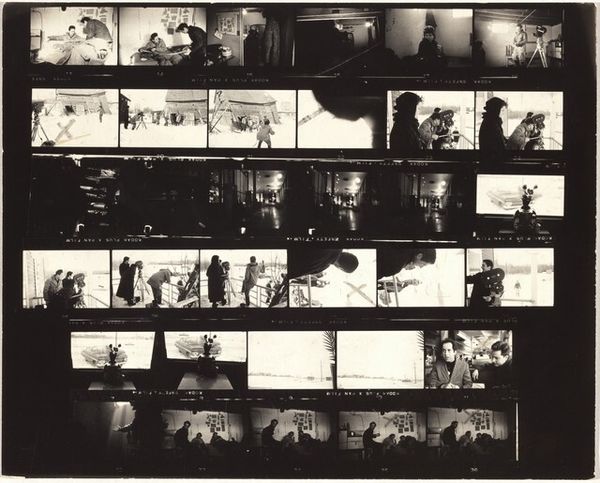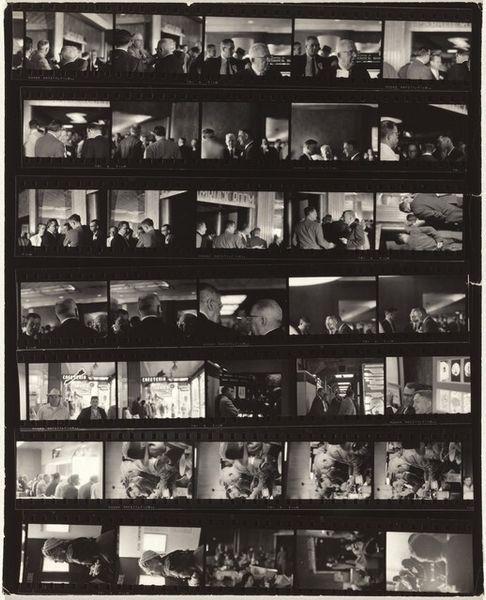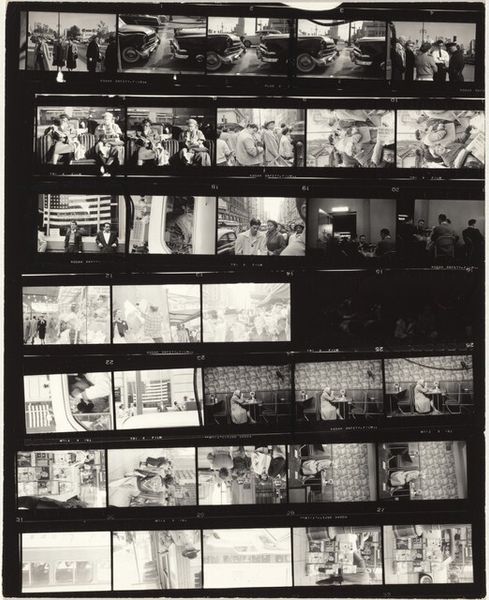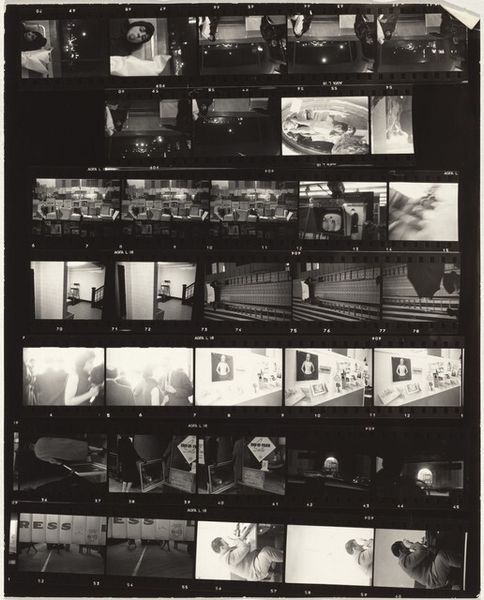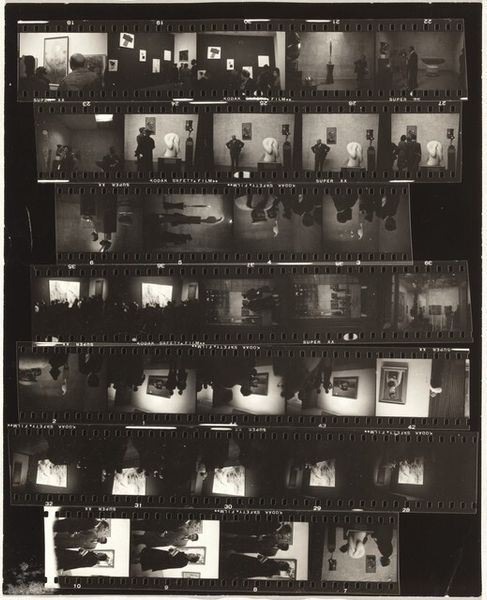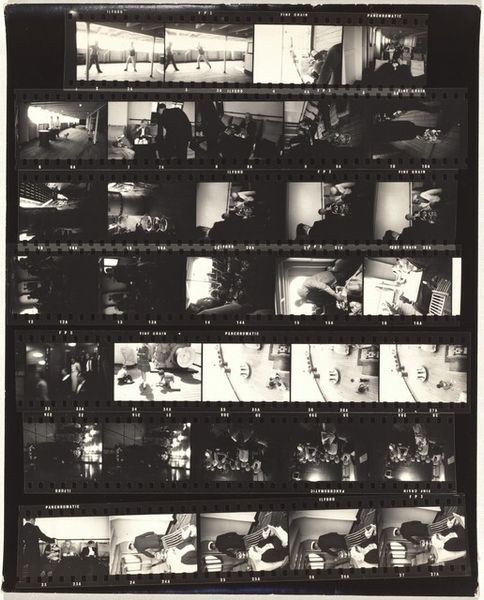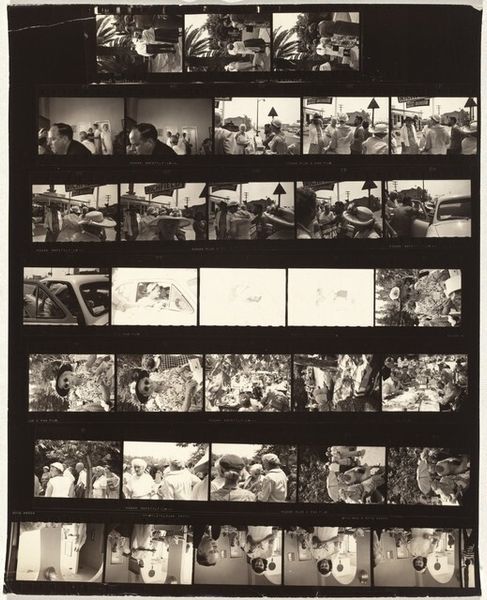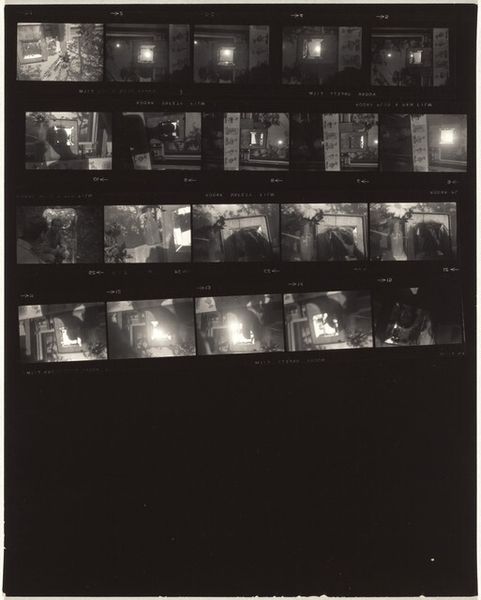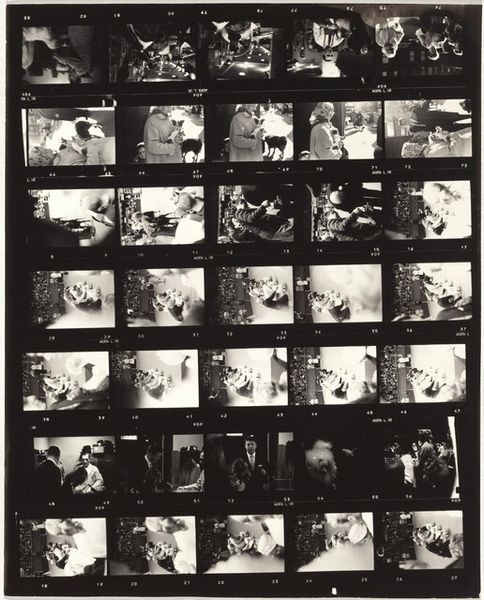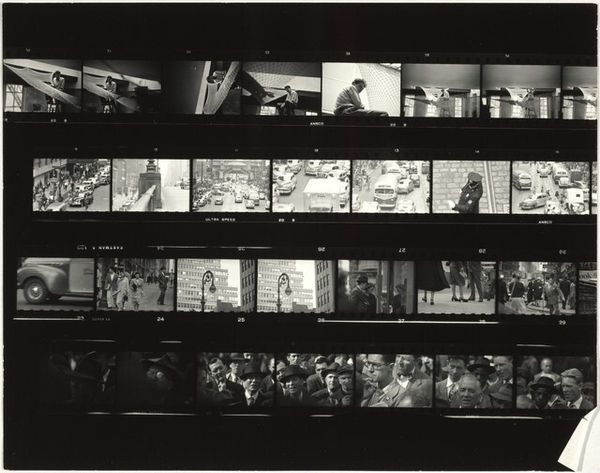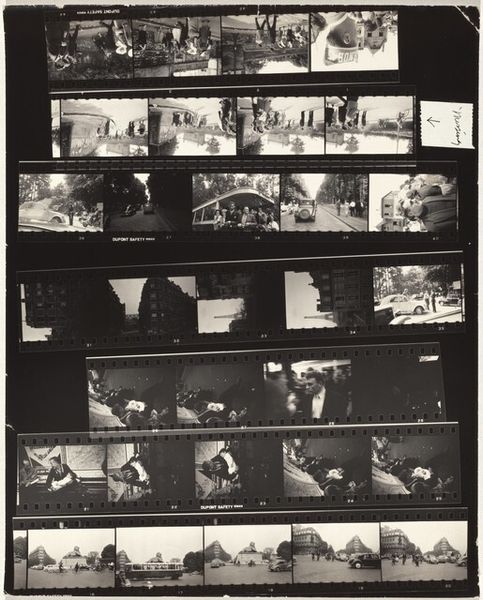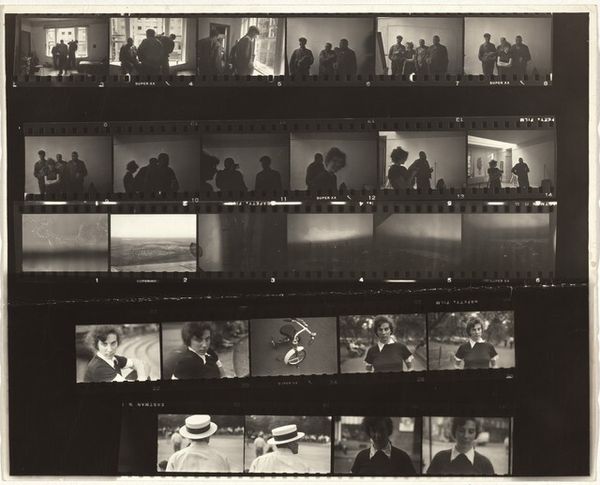
print, photography, gelatin-silver-print
#
film photography
# print
#
archive photography
#
photography
#
gelatin-silver-print
#
monochrome photography
#
ashcan-school
#
monochrome
Dimensions: sheet: 25.2 x 20.3 cm (9 15/16 x 8 in.)
Copyright: National Gallery of Art: CC0 1.0
Curator: This is "Museum of Modern Art no number," a 1955 gelatin-silver print by Robert Frank. Editor: It strikes me immediately as a visual study of how people engage with art—or perhaps, disengage. The repetitive frames and grainy texture feel almost anthropological. Curator: Indeed. Frank's method was very deliberate, examining everyday experiences. Consider the implications of choosing the Museum of Modern Art as his subject. What does it say about art institutions and the public's relationship to them during the mid-20th century? Editor: It makes me wonder about accessibility. Are these images critiquing the museum experience, perhaps highlighting the separation between art and the average person, even in a space intended for public consumption? Curator: Perhaps. Frank, coming from a commercial background, was keen to elevate photography, to legitimize it as high art and separate it from simple labor. That context infuses his practice, impacting both his materials and style. We're dealing with carefully selected film stock and deliberate compositional choices that rebel against straightforward documentation. Editor: Yet there's an intimacy to these contact sheets that undercuts the polished facade of the art world. These aren’t glossy exhibition prints; they're a raw look at the mechanics behind image selection. The inclusion of film borders, frame numbers and manufacturing info implicates the process as well as the institutions, like Kodak for example. Curator: Precisely. These are the marks of labor—visible means of production laid bare, transforming the consumption of the exhibition into the process. Editor: Thinking about it, maybe the slightly out-of-focus quality forces us to consider photography’s reliability. Frank seems to suggest that seeing is not just believing; there's always mediation involved. The context becomes as critical as the subject. Curator: Absolutely, and that focus shifts art's role within public consciousness. So this encourages the consideration of how cultural spaces curate experiences and how those choices reflect, or fail to reflect, the diverse population consuming that imagery. Editor: It reframes questions around viewership in powerful ways. These gelatin-silver prints serve less as objects of beauty, and more as tools prompting reflection on both seeing and the business behind artistic practices. Curator: A stimulating glimpse into Frank's methodology and a thoughtful social commentary rolled into one, don't you think? Editor: I'm left considering the responsibility that art institutions have to truly connect with diverse publics, while acknowledging that every selection involves implicit bias and exclusion.
Comments
No comments
Be the first to comment and join the conversation on the ultimate creative platform.
